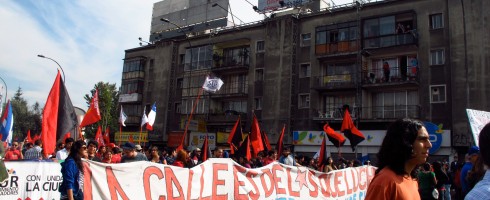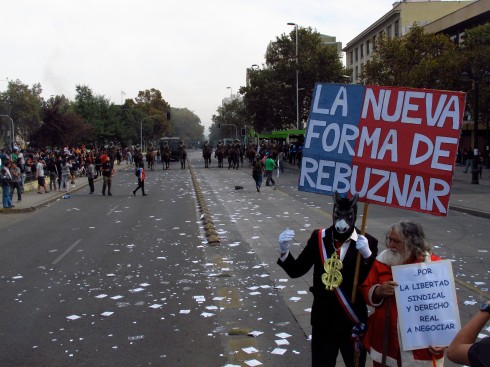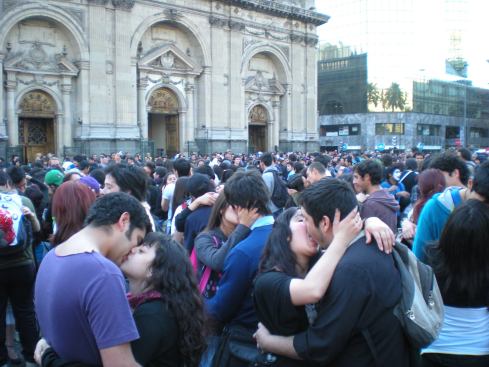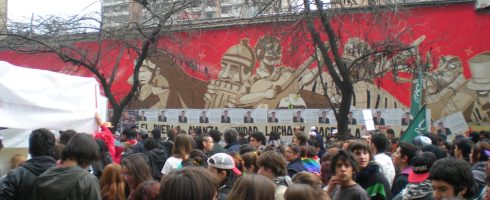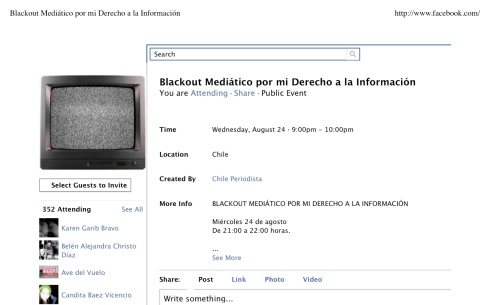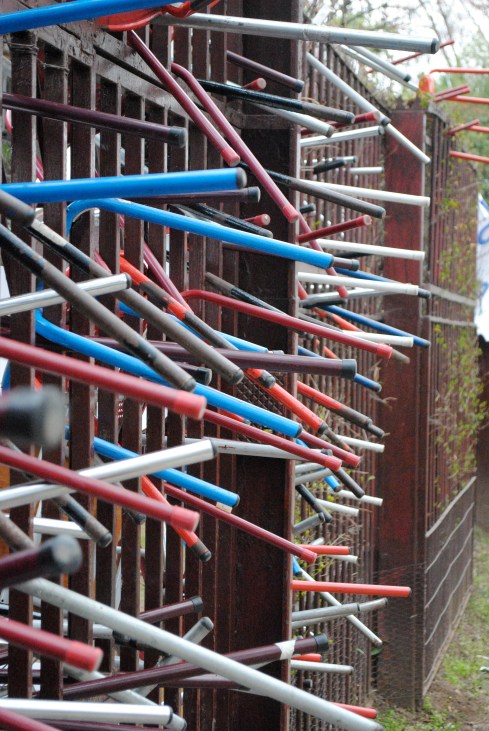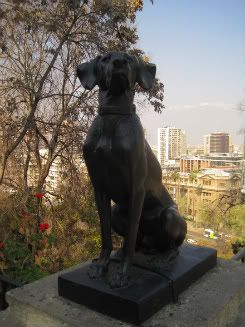Up to 120,000 defy winter rains and violent confrontations in Santiago as Chile’s students regain momentum.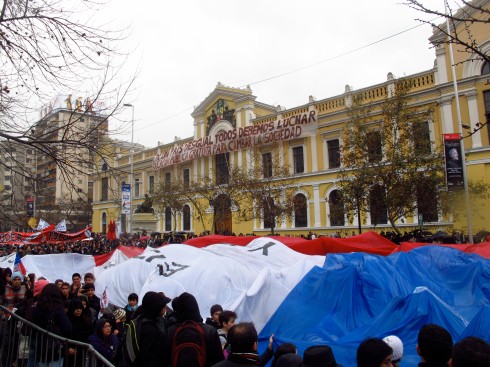
Beneath sporadic rain that became a steady drizzle by days end, tens of thousands of high school and university students – accompanied by teachers, families and workers – took to the streets in Santiago today, in the second nation-wide march of the Chilean student movement in 2012.
Triumphant student leaders announced that 120,000 marched in the Chile’s capital alone, in what was dubbed la segunda marcha de los paraguas, (“the second march of the umbrellas”) in reference to the protest held under similar conditions last winter.
For more photos see Sitio Quiltro’s Flickr account.Despite temperatures as low as 7°C (45 ºF), acts of vandalism – including the destruction of a bus and the defacement of a bank branch – and the reprisals of caribineros, the march recaptured some of the energy of last years massive protests, with the numerous marching bands, dancing troupes, costumes and sheer numbers.
Beginning at Plaza Italia, the traditional meeting point for demonstrations and celebrations in Santiago, the march wound its way down the city’s main street, Alameda, and through the heart of downtown, before coming to an end on the corner of Blanco Encalada and Abate Molina, beside the Club Hípico racecourse.
[vimeo 44914064]A stage was set up for folk singer Manuel García, who warmed up the crowd as it assembled, before student leaders from across the country took to their soapboxes for a series of fiery speeches.
Gabriel Boric, president of the Student Federation of the Universidad de Chile (Fech), the country’s most prestigious public university, kicked them off by celebrating the release of Pedro Quezada, a student from Valparaíso, who was held without any conviction for over two months after being accused of throwing a molotov cocktail at carabineros.
The Fech president also hailed last nights protest in newly opened Costenera Center, in which a group of around 100 students, lead by Boric himself, entered the mega-mall and draped an enormous Chilean flag with the slogan “Free and Quality Public Education” from the buildings sixth floor.
Popular spokesperson of the Coordinating Assembly of Secondary Students (Aces), Eloisa Gonzalez, was midway through her speech when a plume of thick, black smoke suddenly began billowing just meters behind the stage. Put off momentarily, the young student leader soon resumed her speech following chants of Sigue! Sigue! from the crowd.
The noxious looking fumes continued streaming upward behind the stage, as indigenous student leader José Ancalao, who was brutally beaten by carabineros in January, denounced the government’s legislative agenda to control Chile’s outbreak of protests as “a declaration war.”
The scene on-stage became even more bizarre when traffic signs behind the stage began wildly swaying as encapuchados began the habitual post rally distraction destruction.
Representatives of Chile’s powerful copper workers union, as well as the Coca Cola workers and teachers unions, addressed the crowd, as did the brother of Manuel Gutiérrez, the 16-year-old boy who was killed by a stray police bullet while walking near a protest in August last year.
Current Fech vice-president and international symbol of the Chilean student movement, Camila Vallejo, gave a salute to the students of Quebec, in a speech that was interrupted by a group of protesters chanting against political parties. Vallejo is a member of the Communist youth wing.
An interview with Gerson Gutiérrez and footage of the speeches, including those of Vallejo and Boric, will be embedded in this article in the coming days.
For updates, follow the Sitio Quiltro on Twitter.
